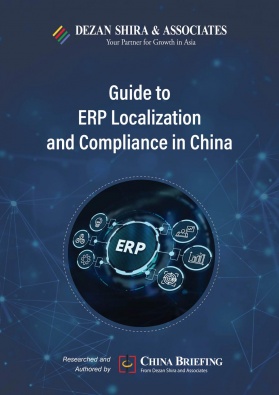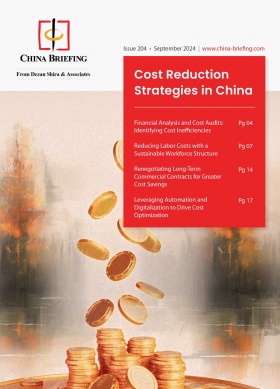Decoding China’s Recent Economic Stimulus Package: What Investors Need to Know
China’s most recent economic stimulus package, announced in September 2024, aims to address China’s economic slowdown, focusing on liquidity improvements, boosting the property market, and stabilizing financial markets. Key measures include interest rate cuts, a reduced reserve requirement ratio (RRR), and support for the struggling real estate sector.
China’s 2024 economic stimulus package marks a critical move to counteract the nation’s economic slowdown and promote high-quality development. Unveiled on September 24, 2024, this comprehensive plan comes amid mounting pressures from a slowing property market, weak consumer demand, and global economic uncertainties. Spearheaded by the People’s Bank of China (PBOC), the package introduces wide-ranging monetary, property, and capital market measures aimed at stabilizing the economy and restoring investor confidence.
The monetary stimulus features key reductions in the reserve requirement ratio (RRR) and policy interest rates. Measures to support the real estate sector include cuts to mortgage rates and down payment ratios, aiming to stimulate home purchases. Additionally, new financial market tools have been introduced, including a liquidity support program for securities and loans to companies for stock buybacks, boosting activity in China’s stock markets.
This article explores the details of China’s 2024 stimulus package, its immediate effects on the markets, and its implications for long-term economic growth.
Key components of the 2024 Chinese stimulus package
China’s 2024 stimulus package aims to address economic challenges stemming from a prolonged property market slump, weak consumer confidence, and slowing growth. As such, the package introduces several measures aimed at revitalizing key sectors, with a focus on monetary easing, property market stabilization, and bolstering stock markets.
Monetary easing measures
The PBOC has rolled out aggressive monetary policies, including a more substantial-than-expected reduction in both the policy interest rate and the RRR. The RRR will be cut by 0.5 percentage points, which will inject around RMB 1 trillion (US$137 billion) in liquidity into the financial system. The RRR may be cut further by 0.23-0.5 percentage points this year.
Additionally, the seven-day reverse repo rate—the PBOC’s key short-term policy rate, used to manage liquidity in the banking system—will be cut by 20 basic points to 1.5 percent, and the loan prime rates (LPR) and deposit rates will also see reductions to boost lending.
These measures aim to ease credit conditions and support public investments, although the appetite for credit remains subdued across sectors.
Property market support
The stimulus includes specific actions to address China’s troubled property sector, which has been in decline since 2021. Mortgage rates on existing homes will be lowered by approximately 0.5 percentage points, delivering an estimated RMB 150 billion (US$21.1 billion) in interest savings for homebuyers. This measure is designed to stimulate household spending and investment while alleviating financial burdens.
Moreover, the central bank will fully fund a RMB 300 billion (US$42.52 billion) loan initiative to enable state-owned enterprises (SOEs) to purchase unsold homes and convert them into affordable housing units. The down payment ratio for purchasing second homes has also been lowered to 15 percent, matching the figure for first-time homebuyers.
Fiscal expansion
While the current package focuses primarily on monetary policy, fiscal expansion appears to be gaining traction among policymakers. Liu Shijin, a former deputy director at the Development Research Center of the State Council, has urged the government to introduce a RMB 10 trillion (US$1.37 trillion) stimulus package, which could involve issuing ultra-long-term government bonds. These funds would be directed towards critical areas like public services, affordable housing development, and infrastructure projects, especially in small and medium-sized cities where the demand for housing, particularly for migrant workers, is high.
The government is also reportedly exploring other fiscal measures, including increasing investment in healthcare, education, and social services to address broader public needs. However, there are challenges—fiscal revenue shortfalls could constrain the government’s capacity to fully implement these plans without a budget revision or additional borrowing. Despite this, discussions about possible adjustments to fiscal policy are intensifying, suggesting that a concrete plan may emerge in the near future.
Impact of the stimulus
Immediate stock market reaction
The announcement of China’s latest economic stimulus package has led to a pronounced immediate reaction in the stock markets, exemplified by a notable surge in the CSI 300 index which increased by 4.3 percent following the stimulus announcement. This jump in the index, which tracks the largest companies listed on the Shanghai and Shenzhen stock exchanges, reflects a robust market response characterized by heightened investor optimism and renewed interest in equities. Moreover, following the announcement of the stimulus, the Shanghai Composite Index jumped 4.15 percent, its largest rise in over four years.
Similarly, Hong Kong’s Hang Seng Index jumped nearly 3 percent on October 4, 2025, hitting its highest point since March 2022, fueled by optimism surrounding China’s economic stimulus efforts. The index rose 623.36 points to 22,736.87, while the Hang Seng China Enterprises Index gained 3.06 percent.
To further support the market, the PBOC has introduced two new liquidity tools to encourage financial institutions and listed companies to increase their stock holdings. One tool allows securities firms and mutual funds to pledge assets for liquidity injections, while another provides low-interest loans for share buybacks or increasing stock holdings.
The increase in stock prices can be attributed to several factors, including the immediate influx of liquidity into the market and expectations of improved economic conditions driven by government support.
Investors are optimistic that the measures aimed at boosting consumer spending and supporting the real estate sector will translate into higher corporate earnings, particularly in sectors directly impacted by the stimulus.
Varied impacts on different industries
Meanwhile, the effects of the stimulus package are expected to vary significantly across different sectors of the economy, leading to diverse outcomes for various industries in the stock market:
- Technology industry: The technology industry may experience increased investment as consumer spending rises and companies ramp up their digital transformation efforts. Increased demand for tech products and services could drive revenue growth, making technology stocks attractive to investors. Furthermore, policies encouraging innovation and R&D may bolster long-term prospects for tech companies.
- Real estate sector: The real estate sector is anticipated to benefit directly from government measures designed to support housing markets and restore confidence among buyers and developers. A rebound in real estate activity could positively affect property developers and construction companies, leading to enhanced performance. However, some analysts caution that these measures may only provide a temporary boost, as broader confidence in the housing market remains low, and household debt capacity is constrained. Investors will need to be vigilant about potential overheating in the property market, which could pose risks down the line.
- Consumer goods and retail: As consumer spending revitalizes, companies in the consumer goods and retail sectors are likely to see an uptick in sales, which may translate into improved stock valuations. Firms that successfully adapt to changing consumer preferences, particularly in the luxury and e-commerce segments, could emerge as winners in this environment.
Are the new stimulus measures enough to supercharge China’s economy?
The recent economic stimulus measures introduced by China have provided a boost to the country’s growth prospects, but questions remain about their long-term impact. According to the World Bank, China’s growth rate is projected to hit 4.8 percent in 2024, a slight increase from earlier forecasts. However, the current stimulus alone may not be enough to supercharge China’s economy in the long run, which requires more aggressive fiscal expansion.
The stimulus package has primarily focused on monetary measures, such as rate cuts and liquidity support, which have led to a stock market rally. Nevertheless, to maintain long-term growth, China needs to make more efforts to tackle weak consumer spending and structural challenges like an aging population, property market fragility, and global tensions.
As for additional fiscal stimulus in 2024, while China’s National Development and Reform Commission has pledged further support, such as accelerating special bond issuance, no major new stimulus plans have been announced.
The effectiveness of any future measures will depend on how they address both supply-side constraints and stimulate consumer demand, a key factor in sustaining economic growth beyond 2024.
Longer-term projections
While the immediate stock market reaction has been favorable, analysts caution that the long-term outlook remains tentative. The potential for sustained growth will depend on several critical factors, including the effectiveness of the stimulus measures in fostering a stable economic environment and the ability of Chinese authorities to implement necessary structural reforms.
Indeed, while the stimulus is likely to provide a short-term boost to the stock markets, there are concerns about whether this momentum can be maintained over the long haul. Investors will be closely monitoring indicators of economic health, such as consumer confidence, industrial production, and employment rates.
Global ripple effect of China’s economic stimulus package
China’s latest economic stimulus package, with its focus on boosting liquidity, supporting the real estate sector, and revitalizing consumer spending, is expected to trigger ripple effects across the global market. These measures are designed not only to stabilize China’s domestic economy but also to influence global demand for commodities, industrial goods, and services, thereby affecting economies closely tied to China’s supply chains and consumer markets.
Countries with strong trade ties to China, particularly in the Asia-Pacific region, are likely to benefit the most. Australia, for one, could see an uptick in demand for iron ore and other raw materials, thanks to a potential recovery in China’s real estate sector. South Korea—a crucial supplier in China’s value chains—stands to gain from increased demand for industrial exports.
Beyond Asia, European economies like France and Italy may also benefit, especially if Chinese consumers resume high levels of spending on luxury goods and international travel. The upcoming Chinese New Year in early 2025 could provide a crucial boost to tourism and high-end product demand.
On the other hand, the United States may see more limited benefits from the stimulus. Ongoing trade restrictions and technology export bans have reduced economic ties between the two countries, diminishing the positive spillover effects that might otherwise be expected.
Lastly, developing countries, particularly major commodity exporters like Chile, Argentina, and nations in Southeast Asia, could benefit from a rebound in Chinese demand for raw materials and industrial inputs. As the world’s largest consumer of commodities, China’s economic recovery is critical for global markets dependent on these sectors.
While the stimulus package marks a pivotal moment for China, analysts believe that its full global impact will depend on the country’s ability to sustain domestic growth, foster consumer confidence, and encourage investment.
What does China’s economic stimulus package mean for investors?
China’s stimulus package has sparked investor optimism, with markets reacting positively. However, the key question is whether the measures are sufficient and sustainable for long-term growth. While Chinese equities may present a tactical buying opportunity, the scale and timing of the stimulus need to be evaluated.
Investors should watch industries tied to Chinese demand, such as commodities and European sectors, to assess the broader impact. Though the short-term boost is evident, the true test will be whether these policies can address deeper economic challenges or lead to continued market volatility.
About Us
China Briefing is one of five regional Asia Briefing publications, supported by Dezan Shira & Associates. For a complimentary subscription to China Briefing’s content products, please click here.
Dezan Shira & Associates assists foreign investors into China and has done so since 1992 through offices in Beijing, Tianjin, Dalian, Qingdao, Shanghai, Hangzhou, Ningbo, Suzhou, Guangzhou, Haikou, Zhongshan, Shenzhen, and Hong Kong. We also have offices in Vietnam, Indonesia, Singapore, United States, Germany, Italy, India, and Dubai (UAE) and partner firms assisting foreign investors in The Philippines, Malaysia, Thailand, Bangladesh, and Australia. For assistance in China, please contact the firm at china@dezshira.com or visit our website at www.dezshira.com.
- Previous Article Kostensenkungsstrategien in China – Neue Publikation
- Next Article Profiling China-New Zealand Trade and Investment Relations









